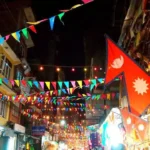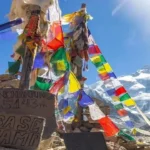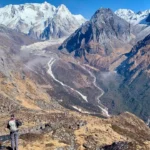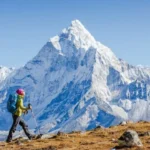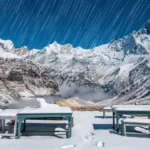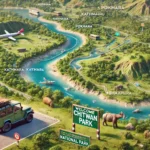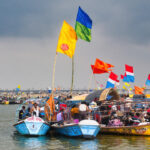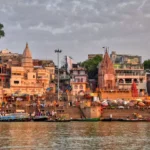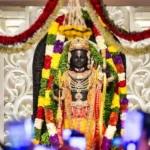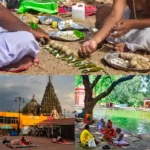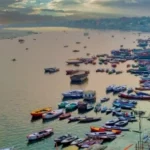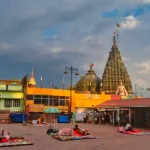What is Palpa? Setting the Scene in Nepal’s Mid-Hills
Palpa is not just a single town but a district in Lumbini Province, located in the western part of Nepal. Its administrative heart and main attraction is the town of Tansen (Tansing), perched strategically on the southern slope of the Mahabharat Range (Lesser Himalayas) at an elevation of around 1,350 meters (4,430 feet).
Key Characteristics of Palpa:
- Strategic Location: Historically, Palpa commanded a crucial position on the trade route between the plains of India and the hills of Nepal and Tibet. This fostered economic prosperity and cultural exchange.
- Tansen Bazaar: The soul of Palpa resides in Tansen Bazaar. Unlike the more grid-like layouts of newer towns, Tansen features winding, cobbled streets, traditional Newari houses with intricately carved wooden windows (Tikijhyā), and bustling market squares. It feels like stepping back in time.
- Newari Influence: Although geographically distant from the Kathmandu Valley (the heartland of Newari culture), Tansen has a significant Newari population. Migrations centuries ago brought their rich traditions in architecture, craftsmanship, cuisine, and festivals, which continue to define the town’s character.
- Panoramic Views: Thanks to its elevation and location, Palpa, especially from viewpoints like Shreenagar Hill, offers breathtaking panoramic views of the Himalayan ranges, including Dhaulagiri, Annapurna, Manaslu, and potentially even Kanjirowa on clear days. It also overlooks the Madi Valley and the plains below.
- Gateway to Rani Mahal: Tansen serves as the primary base for exploring the surrounding region, most notably for the journey down to the iconic Rani Mahal on the Kali Gandaki River.
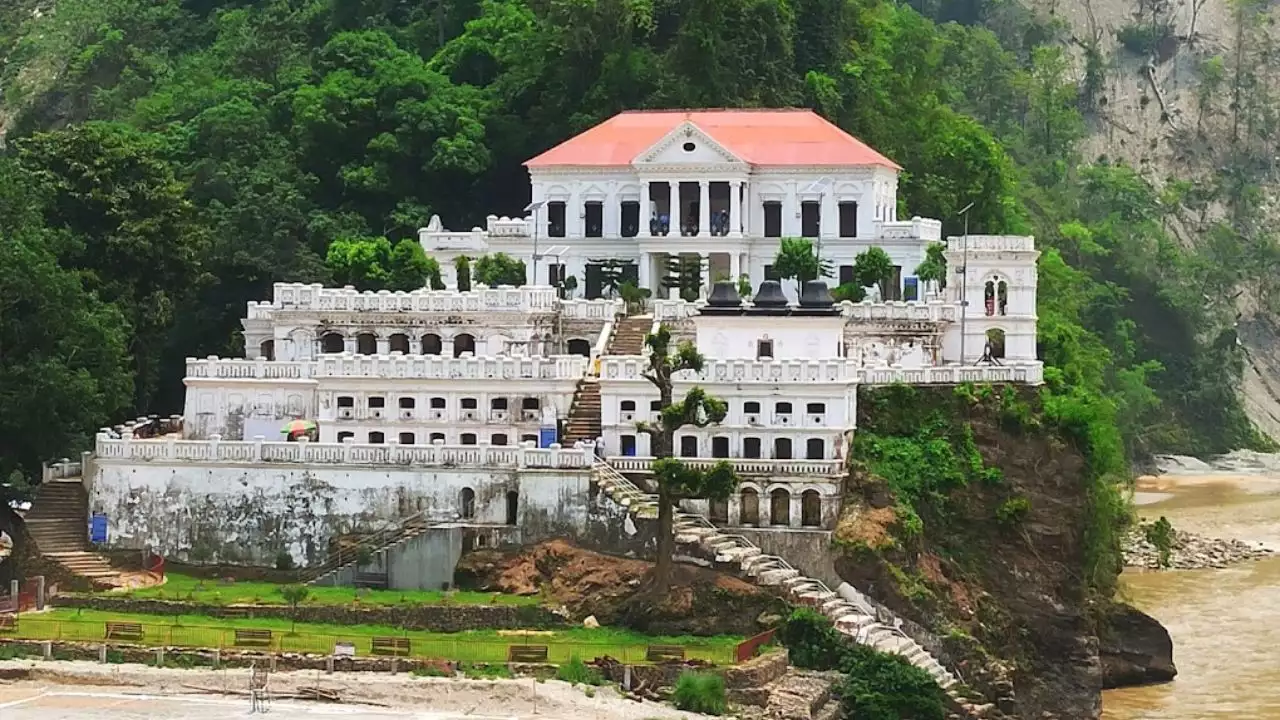
Walking through Tansen is an experience in itself. The air is often cooler than the plains, the pace of life is unhurried, and the blend of history, culture, and stunning natural scenery creates a unique and captivating atmosphere rarely found on the main tourist circuits.
The Jewel of Palpa: Rani Mahal – Nepal’s Palace of Love
Approximately 1 kilometre north of Tansen, nestled in a dramatic gorge where the Ridi Khola meets the mighty Kali Gandaki River, stands the Rani Mahal (रानी महल). Its relatively isolated location, stunning neoclassical architecture, and poignant backstory make it one of Nepal’s most evocative landmarks.
The Story Behind Rani Mahal:
The palace was built by General Khadga Shumsher Jung Bahadur Rana, a powerful figure during the Rana oligarchy that ruled Nepal for over a century. Khadga Shumsher served as the Governor of Palpa from 1892 to 1902. The story goes that his beloved younger wife, Tej Kumari Devi, was deeply devoted to him. As she lay on her deathbed in 1893, she made a final wish: that Khadga Shumsher build a palace in her memory at a serene location.
Heartbroken but determined to fulfil her desire, General Khadga Shumsher commissioned the construction of Rani Mahal at the confluence of the rivers, a spot considered holy and peaceful. Construction began in 1893 and was completed in 1897. He named it “Rani Mahal” – the Queen’s Palace – as an eternal symbol of his love for Tej Kumari.
This act of devotion has led many to draw parallels with the story of the Taj Mahal in India, built by Emperor Shah Jahan for his wife Mumtaz Mahal. While architecturally distinct and on a different scale, the underlying sentiment of love and remembrance earns Rani Mahal the affectionate title “Taj Mahal of Nepal.”
Architecture and Design:
Rani Mahal showcases a distinct European neoclassical architectural style, which was fashionable among the Rana elite who admired Western aesthetics. Key features include:
- Grand Facade: A symmetrical front with columns, arches, and large windows.
- Balconies and Terraces: Offering views of the river and surrounding hills.
- Courtyards: Internal spaces typical of Rana palaces.
- Riverside Setting: Its location right on the banks of the Kali Gandaki is perhaps its most striking feature, creating a dramatic and picturesque scene.
- Ancillary Structures: The complex originally included guest houses, kitchens, stables, and temples (including shrines dedicated to Shiva and Ganga), indicating it was meant to be a functional, albeit remote, residence.
The palace’s grandeur contrasts sharply with the rugged, natural beauty of the river gorge, making its appearance almost surreal.
Political Intrigue and Abandonment:
Khadga Shumsher’s tenure in Palpa was marked by political ambition and rivalry within the Rana family. He was implicated in conspiracies against the ruling Prime Minister and eventually forced into exile in India around 1902-1903. With his departure, Rani Mahal was largely abandoned, left to the mercy of time, neglect, and the encroaching jungle.
Restoration and Current Significance:
For decades, Rani Mahal remained a crumbling ruin, visited only by intrepid travellers and locals. Recognising its historical and cultural importance, the government of Nepal has initiated restoration efforts in recent years. While the restoration aims to preserve its structure and historical integrity, it’s an ongoing process.

Today, Rani Mahal stands as:
- A Major Tourist Attraction: Drawing visitors intrigued by its story, architecture, and scenic location.
- A Symbol of Romantic Devotion: Embodying the poignant tale of Khadga Shumsher and Tej Kumari.
- A Historical Landmark: Representing the Rana era’s influence and architectural preferences.
- A Pilgrimage Site (Symbolic): Its location at a holy river confluence adds a spiritual dimension for some visitors.
Visiting Rani Mahal involves a journey (often a hike or a jeep ride on a rough road) down from Tansen, adding an element of adventure to the experience. The sight of the elegant palace emerging by the riverside after the trek is truly rewarding.
Delving Deeper: A Glimpse into the History
Palpa’s significance stretches far beyond the story of Rani Mahal. It boasts a rich and influential history, particularly as the seat of the powerful Sen Dynasty.
The Sen Kingdom of Palpa:
- Origins: Emerging around the 15th century, the Sen kingdom of Palpa became one of the most powerful principalities among the Baise Rajya (22 principalities) in western Nepal.
- Expansion: Under rulers like Mukunda Sen I (16th century), the kingdom expanded significantly, controlling vast territories and challenging even the Malla kings of the Kathmandu Valley at times.
- Cultural Flourishing: The Sens were patrons of art and culture, contributing to the development of Palpa as a regional hub.
- Strategic Importance: Controlling trade routes and key hill territories gave Palpa considerable economic and military clout.
Palpa and the Unification of Nepal:
During the late 18th century, Prithvi Narayan Shah, the King of Gorkha, embarked on his campaign to unify Nepal. The Sen Kingdom of Palpa played a complex role:
- Alliance and Rivalry: Palpa sometimes allied with Gorkha and sometimes opposed it. Marriage alliances (like Prithvi Narayan Shah’s first marriage to a Palpa princess, which ended contentiously) intertwined the fates of the two kingdoms.
- Conquest: Despite its strength, Palpa was eventually annexed into the expanding Kingdom of Nepal under Prithvi Narayan Shah’s successors in the early 19th century (around 1806). The last king of Palpa, Prithvipal Sen, was captured and killed in Kathmandu.
The Rana Era and Beyond:
- Administrative Centre: After annexation, Palpa remained an important administrative centre. Tansen served as the regional headquarters.
- Governors: Powerful figures, often from the ruling Rana family, like Khadga Shumsher, were appointed as governors, further shaping the town’s development and architecture (e.g., the Palpa Durbar).
- Decline in Importance: With the development of modern highways bypassing Tansen (like the Siddhartha Highway connecting Pokhara and Sonauli), Palpa’s strategic importance gradually declined, preserving its historical character but slowing economic growth compared to towns on the main routes.
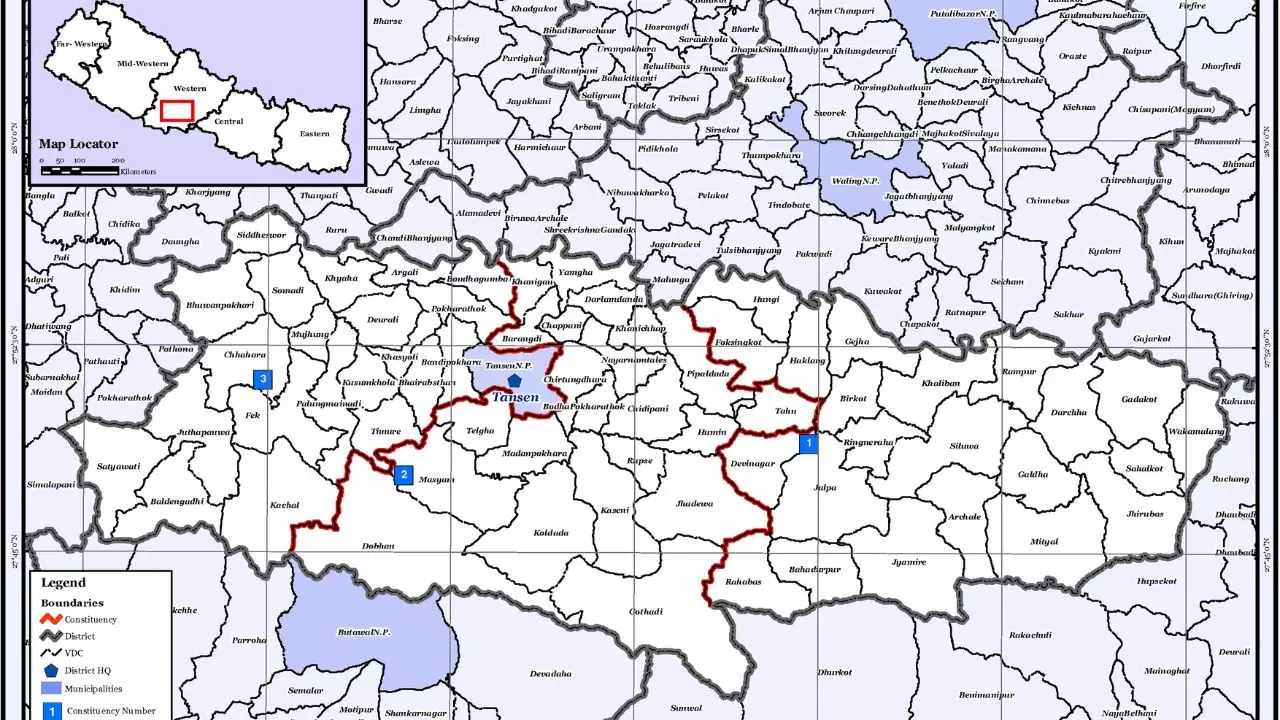
Understanding this history adds depth to any visit. The remnants of the Sen era, the grandeur of Rana-built structures, and the enduring Newari traditions all tell the story of Palpa’s rise, influence, and transformation over centuries.
Exploring Tansen Bazaar: The Heartbeat of Palpa and Rani Mahal
While Rani Mahal might be the most famous landmark, the true essence of Palpa is best experienced by exploring Tansen Bazaar. Spend a day or two wandering its atmospheric streets, and you’ll discover:
- Palpa Durbar Square (Tansen Durbar): Once the seat of Sen kings and later Rana governors, this impressive palace complex dominates the town centre. It suffered significant damage during the Maoist insurgency but has since been rebuilt and often houses government offices and a museum. Its architecture reflects the Rana-era neoclassical style.
- Amar Narayan Temple: Built in the early 19th century, this beautiful wooden temple dedicated to Lord Vishnu is a prime example of traditional Nepali pagoda architecture. It features intricate wood carvings and erotic depictions on its struts, similar to those found in Kathmandu Valley temples. It’s an active place of worship and a peaceful spot.
- Sitalpati (Shital Pati): This octagonal pavilion in the main square (near the Durbar) is a traditional public resting place. It serves as a social hub where locals gather to chat, play games, and watch the world go by. It’s a great place to observe local life.
- Bhagwati Temple: Another important religious site, this temple draws large crowds during festivals, especially the Bhagwati Jatra, which commemorates Nepal’s victory over British-India forces.
- Intricate Newari Architecture: Look up as you walk! The beautifully carved wooden windows (especially the Tikijhyā), doors, and cornices on the traditional brick and mud-mortar houses are a feast for the eyes. Many buildings lean picturesquely over the narrow streets.
- Dhaka Cloth Weaving: Palpa is renowned for Dhaka fabric, particularly the iconic Dhaka Topi (the traditional Nepali men’s cap) and Dhaka ko Cholo (women’s blouses). You can visit workshops (like the famous United Mission to Nepal workshop), see weavers at their looms, and purchase high-quality, authentic Dhaka products. This is a living craft tradition.
- Metal Craft – The Karuwa: Tansen is also famous for its traditional metal water jugs called Karuwa, characterised by their unique spout shape. These make for distinctive souvenirs and showcase local metalworking skills.
- Local Markets: Explore the small shops selling everything from spices and daily necessities to local crafts and textiles. The market squares buzz with activity, especially in the mornings and evenings.

Tansen offers an authentic Nepali hill town experience, rich in culture, history, and craftsmanship, largely untouched by mass tourism.









